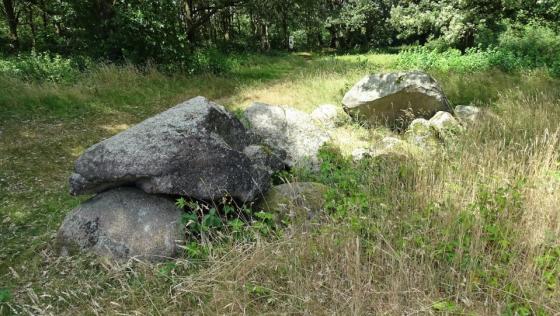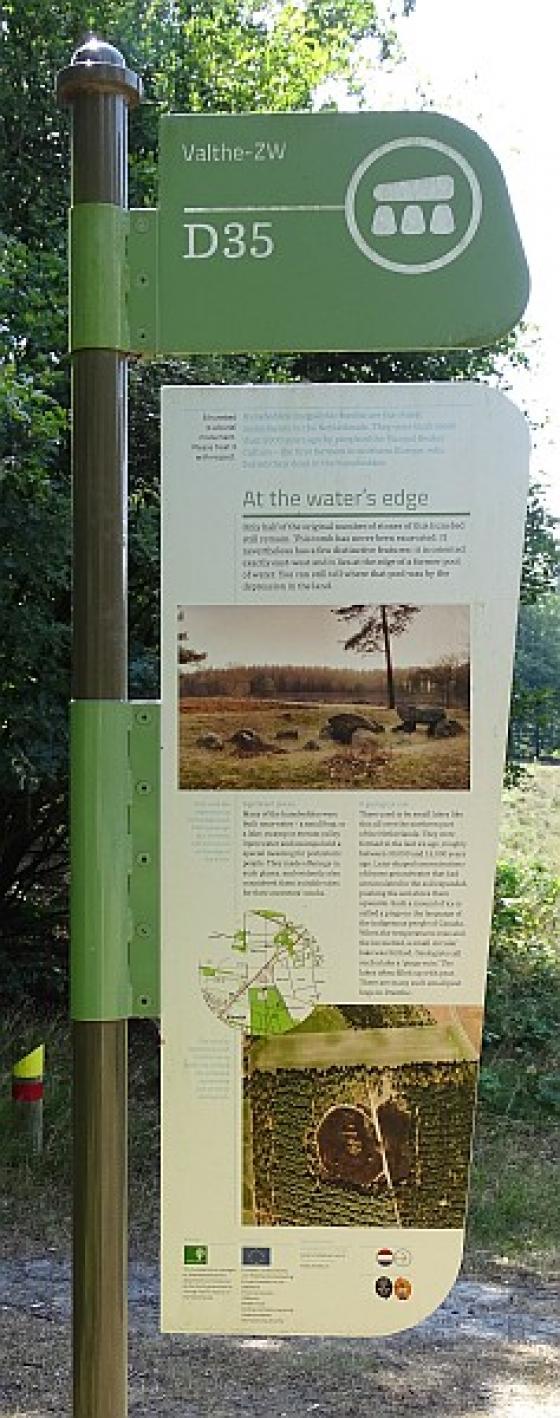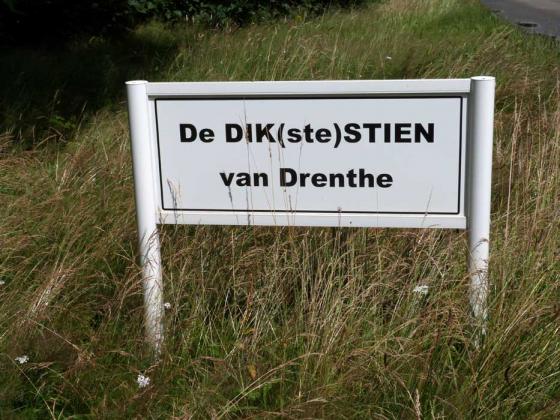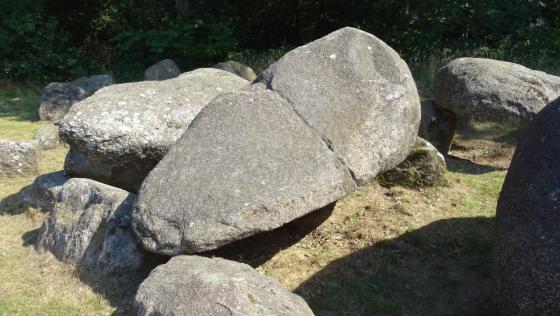Although originally constructed as a grave for an important person during the age of the Single Grave Culture between 2850-2450 BCE, Eppiesbergje was again used for interments between 1800-1100 BCE during the Middle Bronze Age when a second tomb was built into its side. At the same time, the mound was raised and reinforced with a layer of boulders. Shortly after, a third interment was made, this time in the top of the mound, after which relatives then dug a ditch around it. Today, Eppiesbergje is the sole survivor of a large cemetery that stood here during the New Stone Age, when the mound lay between three similar, older ones, with additionally, hunebedden to its northwest and south. A later addition was a large ‘urnfield’, where cremated remains of the region’s dead were buried in urns, beneath low mounds.
This cemetery was part of a string of burial sites between Emmen and Odoorn, probably following the line of a prehistoric route through this part of Drenthe.
Investigated by archaeologist A E van Giffen in 1935, several finds came to light, including a hammer-axe, a fragment of a bronze needle and, in the ring ditch, two whole urns.
Unfortunately, around 1916, the heath between Exloo and Valthe was ploughed up: and after World War II, other parts of Drenthe rapidly followed suit. Many ancient antiquities were damaged: particularly, many of the barrows located on the moors were damaged or destroyed.
The name Eppiesbergje is believed to derive from that of a former owner of the adjacent land, one Egbert (Eppie) Fox, who was hanged here.





































